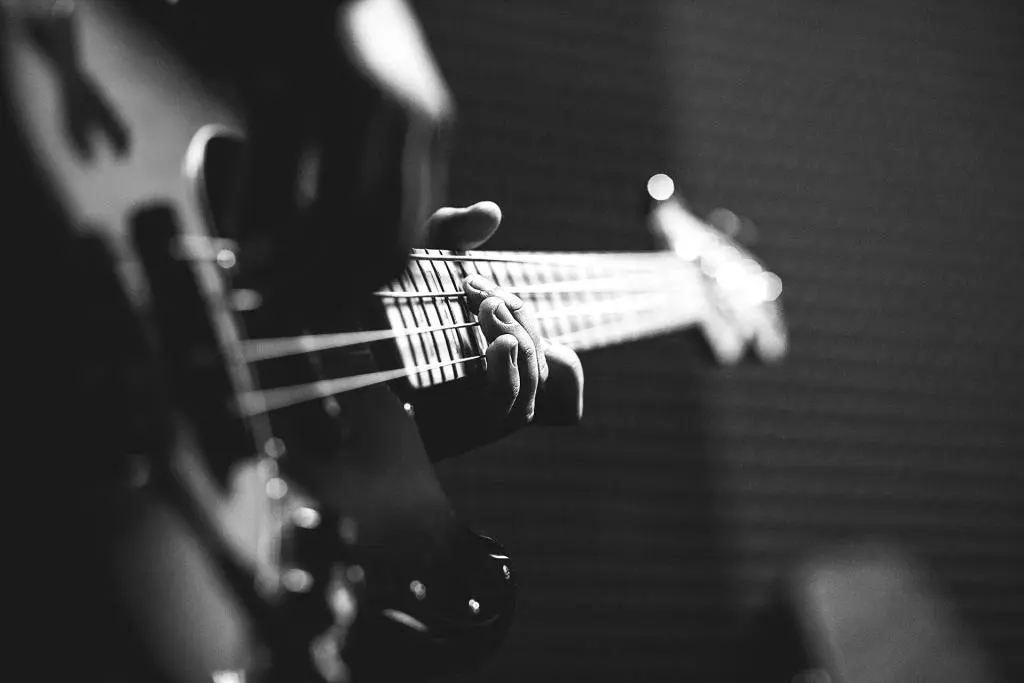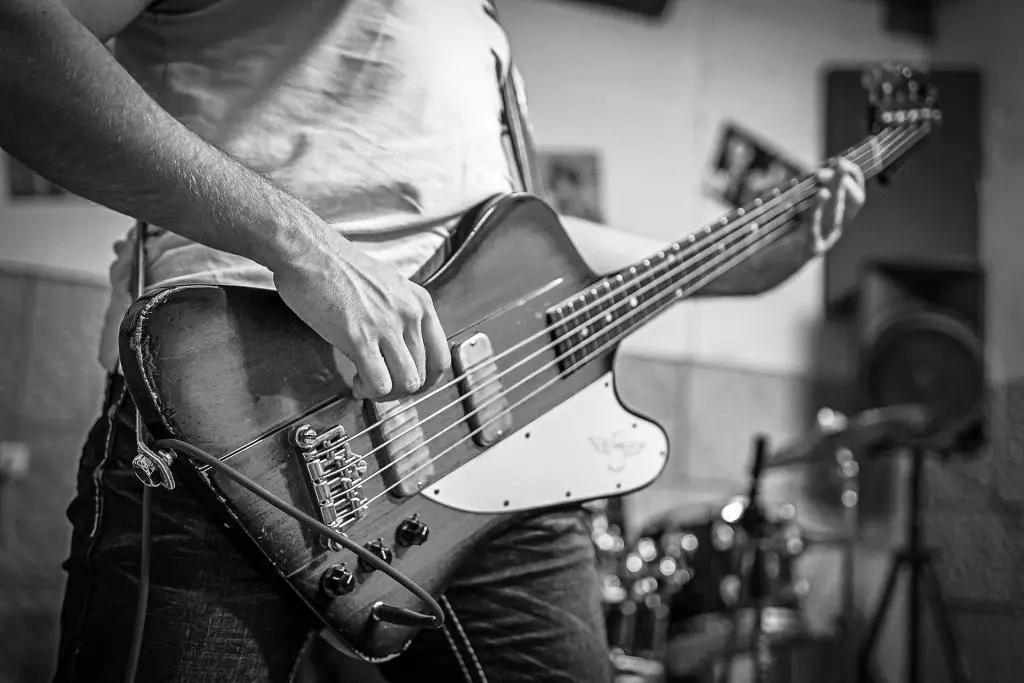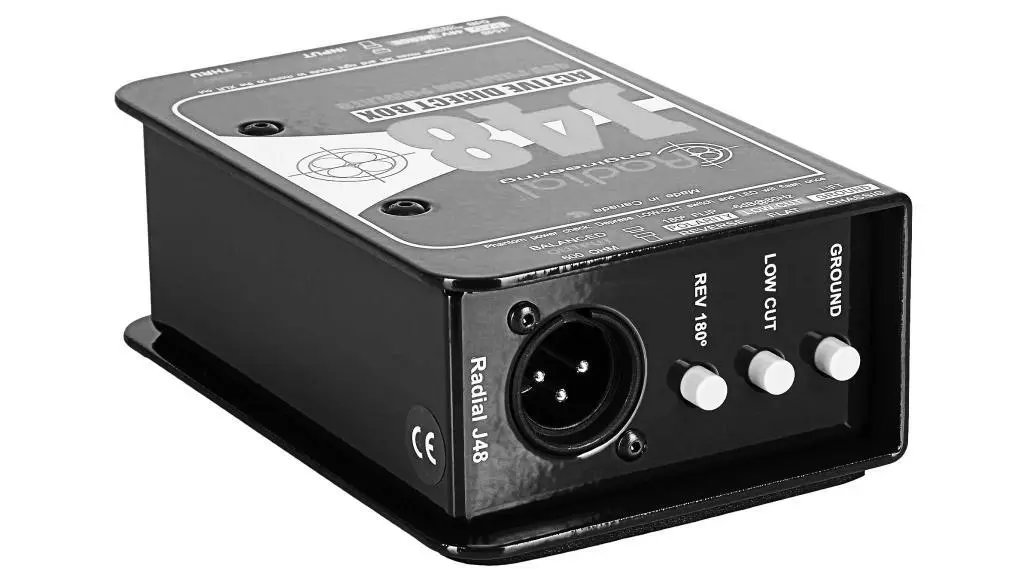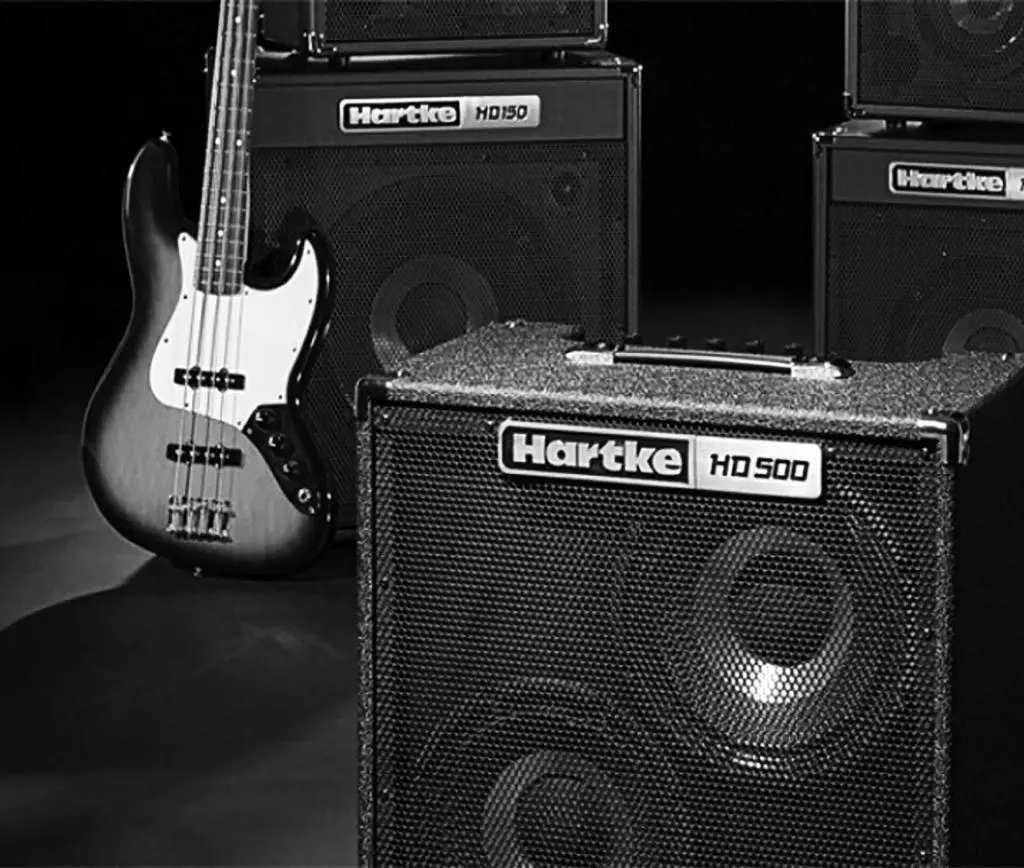Bass tracking forms the rhythmic and harmonic bedrock of any music production. It’s an art where technique, equipment, and musical sensibility fuse together to lay down the low-end that gives the song its groove and depth.
A great bass track does more than just play notes. It propels the song, bridges the rhythmic and melodic elements, and provides the music with its foundational strength. If the bass isn’t tracked well, the rest of the mix suffers, and the overall music lacks the punch and depth it deserves.

20 Bass Tracking Tips for Better Recordings: Table of Contents
We’ll dive deep into the world of bass tracking, shedding light on crucial aspects like the selection of the right bass guitar, the importance of setup and maintenance, the role of a good preamp, and advanced techniques for getting that perfect sound.
Whether you’re an aspiring bass guitarist, an enthusiastic producer, or a sound engineer keen on refining your skills, these insights will equip you to record bass that stands out in any mix. Stay tuned, let’s delve into the resonant world of bass tracking for better recordings.
Preparation for Bass Tracking
The path to capturing a great bass recording begins with thoughtful preparation. Taking the time to plan and prepare can be the difference between a mediocre track and an extraordinary one. Let’s explore the critical steps involved in preparing for bass tracking.

Choosing the Right Bass Guitar
The bass guitar is more than just an instrument; it’s the tool with which you’ll express your musicality. Each bass has its unique voice and character. For example, the Fender Precision Bass delivers a robust, full-bodied tone, perfect for genres requiring a solid low-end punch. Conversely, a Jazz bass provides clean highs and might be more suited for genres that demand a tighter, more melodic bass line. Then there’s the distinctive growl of the Rickenbacker, cutting through the mix with an edgy character.
Your choice will also depend on your comfort level and familiarity with the instrument. Always remember that an excellent performance on a good instrument can often outshine an average performance on a great instrument.
Setting Up and Maintaining Your Bass Guitar
Proper setup and maintenance of your bass guitar are essential to a successful recording session. You’d want to ensure the action (string height) is comfortable for your playing style, the neck is appropriately adjusted, and the intonation is accurate. If you’re unsure how to do these, consulting a professional guitar technician is recommended.
The condition of your bass guitar plays a substantial role in the sound you record. Therefore, keep your instrument clean and ensure the electronics are in good working order.
Selecting the Right Bass Strings
The choice of bass strings significantly influences the sound of your bass guitar. New strings will offer a bright, punchy tone, filled with harmonics. They are often preferred in genres like rock and pop, where a defined and articulate bass tone is essential.
On the other hand, older strings, despite sounding less lively, offer a warm, mellow tone, popular in genres like blues and jazz. Be attentive to the condition of your strings though. Even if you prefer the sound of old strings, overly worn or rusty strings might lead to unreliable performance or unexpected breakages.
Choosing Between Playing with Fingers or a Pick
The way you articulate your bass parts – with fingers or a pick – can drastically change the tone and feel of your bass tracks. Fingerstyle playing provides a softer, more rounded tone and can bring a more organic feel to your bass lines.
In contrast, using a pick yields a brighter sound with a sharper attack, which can add definition and drive to the bass line. This can be especially beneficial in heavy rock or punk genres, where the bass needs to cut through dense mixes.
Prepping Yourself: Familiarize and Rehearse
Finally, and perhaps most importantly, prepare yourself. Know your parts inside out. Rehearse until you can play them in your sleep. The confidence from knowing you’re ready will come across in your recording. Also, remember to rest your hands before a big tracking session. Fresh, rested fingers will perform better than tired, strained ones.
Armed with a well-chosen and well-prepared bass guitar, and with your parts rehearsed to perfection, you’re ready to embark on the journey of bass tracking. The right preparation will lay a strong foundation for a successful recording. Remember, in the world of bass recording, the best preparation leads to the best performance.
Tracking Bass: Establishing the Best Signal Path
In the journey of bass tracking, another crucial aspect you will face is establishing the best signal path. This is the route your bass signal takes from your instrument to the recording system. Each step along this path contributes to the overall sound of your recorded bass track. Let’s delve into the different methods and their respective benefits and challenges.

Understanding the Role of the Direct Injection (DI) Box
A Direct Injection (DI) box is an essential tool for bass recording. By converting the high impedance signal of your bass to a low impedance one, it allows for a cleaner and more flexible recording. A DI box can capture the pure, unaltered tone of your bass guitar, which can be a godsend during mixing.
Using a DI box allows you to experiment freely with amp simulators and effects plugins during post-production. The raw DI signal captures the nuances of your performance, and it can be mixed back into the final track to add clarity and detail.
The Advantages of Miking a Bass Amp in a Live Room
Another method for bass tracking is miking a bass amp in a live room. This technique can yield a very natural, organic tone that carries the character of your bass, the amplifier, and even the room itself. This method is best suited to situations where you want to capture a specific, live feel, or if you’re trying to emulate a traditional recording setup.
However, this method requires careful consideration and experience with microphone placement and room acoustics. It is also less flexible in post-production since the recorded sound includes the coloration of the amp and the room.

The Benefits and Challenges of Recording a Line Out from a Bass Amp
Taking a line out from your bass amp is another viable approach. This method enables you to capture the unique character and coloration that your amp brings to your bass tone, without involving room acoustics. This can be an excellent solution if you’re recording in a less-than-ideal room or a home studio setup.
However, be aware that similar to miking an amp, this method also captures a more committed tone and might limit flexibility in the mixing stage.
The Concept of Using a Combination of Techniques
Finally, a popular approach in modern bass tracking is to use a combination of these techniques. This method often involves recording both the DI signal and the amp sound simultaneously. This provides the best of both worlds, combining the raw, uncolored DI signal’s flexibility with the rich, colored tone from your amp.
The Role of a Preamp in Bass Tracking
The role of a preamp is crucial in the process of bass tracking. A preamp acts as the bridge between your bass guitar and the recording device, enhancing the signal from the instrument before it’s recorded.
Importance of a Good Preamp
A preamp is an integral part of the recording process, responsible for bringing the signal from your bass up to a suitable level for further processing or recording. This stage can significantly affect the overall tone of your instrument, giving it a distinctive sound character. A good preamp enhances the signal without adding unwanted noise or distortion, preserving the sonic integrity of your bass guitar.
The quality of your preamp matters as much as any other component in your signal chain. Even with an excellent bass guitar and a top-notch recording setup, a subpar preamp can degrade your signal, causing your recorded track to sound underwhelming. Investing in a good preamp ensures your signal chain doesn’t falter at this crucial stage before recording.
Classic Preamps and Their Impacts on the Sound
Different preamps have their own tonal characteristics and can impart a unique sound coloration to your bass signal. A renowned example is the Neve 1073 preamp, famed for its warm, musical coloring. These preamps add a level of depth and richness to the signal, which has made them favorites in recording studios worldwide.
On the other hand, some preamps are designed to be as transparent as possible. They aim to boost your signal to the line level without adding any coloration, enabling the true sound of your bass to be recorded.
It’s essential to choose a preamp that matches the sound you’re aiming for. If you seek a warm and classic tone, a classic preamp like the Neve 1073 might be the right choice. On the contrary, if you’re after a more accurate representation of your bass, a transparent preamp could be your best bet.
Compression and Dynamic Control: Essential Aspects of Bass Tracking
In the realm of bass tracking, the tools you use and techniques you adopt greatly influence the overall result. Among these, compression stands as a vital process. Not only does it tame the dynamics, but it also gives the bass a polished sound that fits snugly into the mix.
The Necessity of Compression for Dynamic Control
Compression plays a pivotal role in bass tracking as it helps manage the dynamics of your performance. As bassists know, playing can yield a significant volume difference between the quietest and loudest parts. This wide dynamic range can make bass difficult to mix, often leading to parts that are either too loud or disappear in the mix entirely. Compression helps smooth out these differences, providing a more consistent sound that can blend better in the overall mix.
Compression can be particularly beneficial for techniques like slap and pop, which tend to produce sharp, loud transients. By applying compression, these transients can be softened to prevent input clipping or distorting, thereby maintaining the sonic integrity of the performance.
Best Practices in Applying Compression for Bass Tracking
Applying compression in the right manner is crucial. An 1176-style compressor is known to work well with bass, thanks to its fast attack and release times that can accurately track and tame the rapid dynamics of a bass performance. But, the golden rule here is to be cautious. It’s crucial not to overcompress, as it might squeeze the life out of your performance, leaving no room for dynamic movement in the mix.
Consider using a gentle ratio to start – something in the 2:1 or 3:1 range could be ideal. The attack and release settings will depend on the playing style and genre, but a medium attack and release can often be a good starting point. The aim should be to control the dynamics rather than squash them.
Remember, compression is a tool to shape the sound of the bass, and each situation may require a different approach. Understanding the controls of the compressor and how they affect your sound is crucial to achieving good results.
In conclusion, compression, when used correctly, can significantly enhance the quality of bass tracking. It serves as an indispensable tool for dynamic control, ensuring your bass sits well in the mix while retaining its natural dynamics and character. Experiment and listen carefully to find the best settings for each recording session.
During the Tracking Session: Essential Tips for Stellar Bass Recording
Effective bass tracking is not merely a technical endeavor. It’s also an artistic pursuit that requires attention to detail, musicality, and a performance-oriented mindset. Ensuring that your instrument is in perfect condition, nailing your performance, and serving the song’s needs are paramount to achieving the best possible bass recording. Let’s delve deeper into these crucial aspects of bass tracking.
The Importance of Tuning Before a Take
The first step to a successful bass recording is often the most overlooked: tuning. An out-of-tune bass can wreak havoc on your track, making it impossible to mix correctly. It’s vital to ensure your instrument is perfectly tuned before each take. This isn’t just about the fundamental pitch of the strings. Pay attention to the intonation, making sure each note plays in tune across the fretboard. A good quality tuner is an indispensable tool in this process, allowing you to accurately tune your instrument and ensure you’re starting from the best possible place.
Getting the Performance Right at the Source
With your instrument in tune, the next focus is on your performance. When it comes to recording bass, the best approach is to get the performance right at the source. This means playing each part as accurately and expressively as possible during the tracking session, rather than relying on post-production edits to fix any mistakes or enhance the performance. The feel, groove, and energy of a well-played bass part can’t be replicated or created artificially. The nuances of your touch, the dynamics of your playing, and the interaction between you and your instrument are all essential ingredients in a great bass track.
Keeping Your Ego Out Of The Song’s Way
As a bassist, your role is to serve the song, providing a solid rhythmic and harmonic foundation that supports the other elements of the track. It’s not about showing off your chops or playing as many notes as possible. It’s about playing what the song needs. This could be a simple, steady root note pattern, or it could be a more complex part that interacts with the melody or the rhythm section. Regardless, the key is to listen to the song and make your decisions based on what best supports it. Serving the song also means being willing to take feedback and make changes to your part if it’s not working within the context of the track.
Bass Tracking: Advanced Techniques
Bass tracking can be an intricate process, offering a world of creative possibilities. While solid basic techniques lay the foundation for a great bass sound, a keen understanding and implementation of advanced techniques can take your bass tracks to a whole new level. This section will delve into the advanced techniques you can experiment with to achieve a rich, vibrant, and nuanced bass sound.
Experimenting with Miking Techniques
The way you position your microphones when recording can drastically impact the quality and character of your bass sound. While a single close mic on the speaker is often sufficient, you might experiment with multiple mics at varying distances and angles to capture different aspects of your bass amp’s sound. A room mic can add ambience and depth, while a second close mic can be blended in for tonal variety. Remember, there’s no ‘one-size-fits-all’ miking approach, so don’t be afraid to experiment and find what works best for your specific scenario.
Using Virtual Instruments and Amp Simulators
In today’s digital age, the possibilities for bass recording are endless, thanks to the advent of virtual instruments and amp simulators. These digital tools can emulate the sound of various bass guitars, amplifiers, and even the acoustics of different recording spaces. Using them can allow you to experiment with different tones and textures, and find the perfect sound for your track without needing a vast collection of physical gear.
Layering for a Richer Bass Sound
Layering is a powerful technique that can add depth and richness to your bass sound. This could mean doubling your bass line with a different bass tone, or layering a synth bass underneath to fill out the low end. Remember, the goal isn’t to make the bass louder, but to add dimension and complexity to the sound. As always, the key is subtlety and serving the needs of the song.
Monitoring and Managing Phase Issues
Phase issues can have a significant impact on your bass sound, particularly when using multiple mics or layering tracks. By understanding how to monitor for phase issues and correct them, you can ensure that your bass tracks retain their fullness and impact. Out of phase tracks can cause a ‘thin’ or ‘hollow’ sound, so keeping an eye (and ear) on this is essential.
Monitoring at Moderate Volumes
While it can be tempting to crank up the volume when recording, monitoring at moderate volumes can actually provide a more accurate representation of your bass sound. This can help you make better decisions about your playing, tone, and mix, leading to a more balanced and effective final track.
Recording with Quality Cables and Equipment
Investing in quality cables and recording equipment can greatly improve your bass tracking quality. High-quality cables ensure a cleaner signal path, while better quality preamps, microphones, and interfaces can capture a more accurate and detailed sound.
Paying Attention to Room Acoustics
The acoustics of the room you’re recording in can have a significant impact on the sound of your bass tracks. A room with good acoustics can enhance your sound, adding natural depth and ambience. Conversely, a room with poor acoustics can introduce unwanted reflections and frequencies.
Experimenting with Effects
Lastly, don’t be afraid to experiment with effects. While the bass often serves as a ‘clean’ foundation, judicious use of effects like distortion, chorus, or reverb can add an extra layer of interest and character to your bass sound. Again, the key is to serve the song and not to overdo it.
By incorporating these advanced techniques into your bass tracking process, you can ensure that your bass recordings are not only solid and reliable but also rich, diverse, and creatively satisfying.
Collaboration and Feedback
The world of bass tracking is not just about hardware, techniques, and solitary work. It’s also about collaboration and open, constructive feedback. This can be a significant advantage for your growth and development as a musician and a bass tracker. Here, we will delve into the value of feedback and collaboration in the bass tracking process.
The Value of Feedback in Bass Tracking
When you’re deeply involved in the process of bass tracking, it can be easy to miss minor details or develop a somewhat skewed perception of your sound. This is where feedback becomes essential. Constructive criticism from trusted ears can offer a fresh perspective and highlight areas that might need improvement. Whether it’s from fellow musicians, a producer, an engineer, or even a non-musical listener, external feedback can help you make adjustments and bring your bass tracking to the next level.
But feedback is not just about finding flaws. It’s also about identifying what’s working well so that you can do more of it. Positive reinforcement helps you understand your strengths, bolstering your confidence and reinforcing successful habits. Learning to give and receive feedback is an invaluable skill in the journey of bass recording.
Collaborating with Other Musicians, Producers, and Engineers
Another integral aspect of the bass tracking process is collaboration. Working with other musicians, producers, and sound engineers provides a wealth of learning opportunities and can often lead to better results than working in isolation. You can absorb new techniques, gain insights into different musical perspectives, and expand your knowledge about various aspects of bass tracking.
Collaborating with a drummer, for instance, can help you lock in the rhythm section more tightly. Working with a producer or an engineer can expose you to new recording and mixing techniques that enhance the quality of your bass tracks. Engaging with other musicians allows you to create a deeper musical dialogue, enhancing the overall musical piece.
Remember, every individual brings their unique experiences and insights to the table, and you can benefit immensely from this pool of knowledge. Embrace collaboration, stay open to feedback, and watch as your bass tracking skills reach new heights.
Mastering Bass Tracking: A Final Recap
As we bring this comprehensive guide on bass tracking to a close, it’s important to recall the salient points we’ve covered. This journey through the realm of bass recording has touched on a range of aspects that can make or break your bass tracking endeavors. From the initial preparation stages involving the right choice of a bass guitar and its maintenance, to the dynamic control via compression, every stage has its importance in creating the perfect bass recording.
We dived deep into the critical role played by preamps and signal paths, emphasizing the utility of DI boxes, the pros and cons of miking a bass amp, and the possibility of blending various techniques for a superior result. We highlighted the necessity of a focused mindset during tracking sessions, with attention to precision and serving the song.
Exploring advanced techniques introduced concepts like experimenting with miking techniques, using virtual instruments and amp simulators, layering for a richer bass sound, monitoring phase issues and room acoustics, and the possibility of enhancing your sound through judicious use of effects. Collaboration and constructive feedback emerged as key elements that foster growth and excellence in your bass tracking journey.
The world of bass tracking is complex and layered, but the rewards of high-quality bass recordings are worth every effort. It’s your chance to let the bass guitar shine in the mix and contribute significantly to the overall sound of the music. Remember, your journey in mastering bass tracking is a marathon, not a sprint. Be patient, continue learning, and most importantly, enjoy the process.
So, whether you’re a music enthusiast, a budding sound engineer, or a seasoned musician keen on exploring the nuances of bass tracking, the tips and insights shared here will stand you in good stead. Put these tips into practice, continue to refine your bass recording skills, and be ready to experience the impact of superior bass tracking in your music production efforts.
In the world of music production, nothing is set in stone, and there’s always room for innovation and development. Remember to experiment, be open to feedback, and above all, enjoy the process. Happy bass tracking!
FAQs on Tracking Bass
Remember, every question and answer contributes to a richer understanding of the process and art of bass tracking. Whether you’re a novice or a seasoned pro, continuous learning and exploration are key to mastering bass tracking and achieving outstanding bass recordings.
What is bass tracking?
Bass tracking is an integral part of the music recording process where the bass guitar part is captured and processed. It’s more than just hitting ‘record’; it involves several stages, each demanding careful attention. From selecting the right bass guitar, setting it up correctly, fine-tuning the sound to match the track, to choosing the most suitable recording techniques and performing post-processing, every step contributes to the final quality of the bass track. Understanding the nuances of bass tracking is key to creating a rhythmically tight and tonally balanced recording.
Why is choosing the right bass guitar for tracking so crucial?
Much like each musician has a unique style, each bass guitar has its unique tone and character. These elements contribute substantially to the overall sound of a recording. Selecting a bass guitar is not just about the brand or the price; it’s about the fit between the bass guitar’s inherent sound characteristics and the genre, mood, and demands of the music being recorded. A well-chosen bass can infuse life and depth into a track, while a poorly chosen one can disrupt the sonic harmony.
Fingers or pick – which is better for bass recording?
Both techniques offer distinct sound profiles and have their unique applications. Fingerstyle playing generally provides a warmer, rounder tone that works great for genres like jazz, blues, and R&B. Playing with a pick, on the other hand, can deliver a more defined, punchier, and sometimes aggressive sound, ideal for rock, punk, and metal tracks. However, there’s no rule set in stone. The choice should largely depend on the sound you’re aiming for and how well it serves the song. It’s worth investing time in mastering both techniques and experimenting with them on different tracks.
How does a DI box contribute to bass tracking?
A Direct Injection (DI) box plays a crucial role in bass tracking by ensuring that the inherent tone of your bass guitar is preserved during the recording process. It does this by converting high impedance unbalanced signals (that can be more prone to noise and signal degradation, particularly over long cable runs) from your bass into low impedance balanced signals, which can maintain their integrity even when transmitted over long distances. This makes DI boxes particularly useful in studio settings where the bass amplifier may be located far from the recording console.
What’s the role of a preamp in bass recording?
Preamps serve a critical function in bass recording. They amplify the weak electrical signal from the bass guitar to a level that can be effectively processed by other recording equipment. But that’s not all; preamps can also impart a distinct sonic character to the sound. They can add warmth, depth, clarity, and presence to the bass tone, thereby enriching the overall recording. Therefore, choosing a good quality preamp can make a noticeable difference to your bass tracking results.
Why is compression needed in bass tracking?
Compression is an essential tool in bass tracking because it helps control the dynamic range of the bass guitar. In other words, it ensures that the volume of the bass remains consistent throughout the recording. Given the nature of the bass guitar, where some notes can be significantly louder than others, this is a particularly important consideration. Correctly applied compression can help tame these volume discrepancies, thus preventing any overly loud notes from sticking out in the mix and ensuring a smoother, more balanced bass track.
What are some advanced techniques I can try for better bass tracking?
Once you’ve got the basics of bass tracking down, there are several advanced techniques you can experiment with to further refine your results. These include using different miking techniques to capture varied tonal characteristics, using virtual instruments and amp simulators for added flexibility and tone shaping, layering multiple bass tracks for a richer, fuller sound, managing phase issues to ensure a clear, defined low end, and experimenting with various effects to add creative flair to your bass parts. Also consider the importance of monitoring at moderate volumes to prevent ear fatigue, recording with high-quality cables and equipment to ensure a clean signal, and paying attention to room acoustics to minimize unwanted reflections and room resonances.
What is the best way to record bass?
The best way to record bass often depends on the specific demands of the track, the gear at your disposal, and your personal preference. Some prefer the clean, direct sound of recording through a DI box, while others favor the warmth and character of a miked bass amp. Yet others may opt for a hybrid approach, capturing both a DI signal and an amped signal for maximum flexibility during mixing. Regardless of the method, a few universal principles apply: choose a bass guitar that suits the track, make sure it’s properly set up, and ensure your playing is tight and serves the song.
Does bass get double tracked?
Bass can indeed be double tracked, although it’s not as common as double tracking guitars or vocals. This technique can add depth and richness to the bass sound but requires precise timing to avoid a muddy or overly thick sound. Some producers use a slightly different tone or even a different bass for the second track to create a subtle stereo spread.
Should bass track be mono or stereo?
Generally, bass tracks are recorded and mixed in mono. The low-frequency content of the bass tends to occupy the center of the stereo field, and a mono track is usually sufficient to convey the power and depth of the bass. However, certain creative or mixing decisions may lead you to use a stereo track, such as when using stereo effects or when double tracking.
What level should I record bass at?
It’s recommended to record bass at a moderate level, ensuring that the signal is strong enough to be clear and noise-free, but not so hot that it risks clipping or distortion (unless that’s the desired effect). A good rule of thumb is to aim for an average level (RMS) around -18dBFS, with peaks not exceeding -10dBFS. This leaves ample headroom for further processing and mixing.
How does the choice of strings affect bass tracking?
The type of bass strings you use can have a significant impact on your sound. Roundwound strings are popular for their bright and punchy tone, while flatwound strings offer a smoother, more mellow sound. The gauge of the strings also matters; heavier strings provide a bigger, fuller tone, but may be harder to play.
Should I use a metronome when tracking bass?
Using a metronome during bass tracking can be extremely beneficial. It helps maintain a consistent tempo, which is crucial for tight, rhythmically sound bass tracks. This is particularly important if the bass is one of the first instruments being tracked.
What’s the difference between active and passive basses in tracking?
Active basses have a built-in preamp and require a power source (like a battery). They offer more control over your tone on the instrument itself, but they can sometimes sound too clean or sterile. Passive basses, on the other hand, have a more vintage tone, with a dynamic sound that many players prefer. The best choice depends on your personal preference and the demands of the track.
Is it necessary to use an amp simulator when tracking bass?
While not necessary, amp simulators can be a valuable tool in bass tracking. They allow you to experiment with different amp tones and settings without needing a physical amp. They can also offer consistency, as the sound won’t be affected by variables like mic placement or room acoustics.

